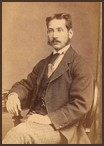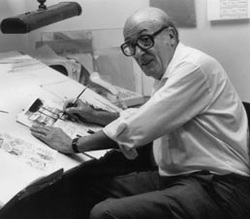
Charles Henry Bennett
(London, 1828–2 April 1867) was a prolific Victorian illustrator who pioneered techniques in comic illustration. He wrote illustrated stories and illustrated many children’s books including his own version of Aesop’s Fables “translated into Human Nature”. His work also appeared in Punch and other comic magazines and newspapers. He died in poverty at the age of 37. A benefit given at London’s Adelphi Theatre for his widow and children shortly after his death was the occasion for the first public performance of Cox and Box.
In 1868 The Illustrated Pilgrim’s Progress was re-published with Charles Bennett as the illustrator. Charles Kingsley wrote a lengthy preface to the first edition in 1860, adding a second in 1868 commending the work of his friend, Charles Bennett who had died one year earlier.
BIBLIOGRAPHY:
Papernose Woodensconce. 1854
The Fables of Aesop and Others, Translated into Human Nature. W. Kent & Co., 1857.
The Faithless Parrot, Routledge, 1858.
The sad history of Greedy Jem and all his little brothers, 1858.
The Nine Lives of a Cat, Griffith and Farran, 1860
Mr. Wind and Madame Rain, 1864.
“Hair-Dressing by Electricity”. Punch, 1866.
The origin of species, dedicated by natural selection to Dr. Charles Darwin (caricatures series, included in Character Sketches and Development Drawings, 1872)
Aesop’s Fables and Others, Designed and Drawn on Wood by Charles H. Bennett, with Additional Fables Designed and Drawn by Randolph Caldecott. London: Bracken Books, 1986.
(wikipedia.org)
The nine Lives of a Cat
The faithless Parrot
Old Nurse's Book

WILL EISNER
(1917-2005), born in Brooklyn NY, is recognized internationally as a giant in the field of sequential art, a term he coined. His cartooning career spanned nearly seventy years and eight decades.
EARLY CAREER… Eisner contributed to Wow, What a Magazine shortly after high school. While still a teenager, in 1936, he co-founded the Eisner & Iger Studio, a “packaging house” providing content to publishers at the virtual onset of the comic book industry. That same year he started his buccaneering saga Hawks of the Seas. Eisner’s early staff included such future luminaries as Jack Kurtzberg (later Jack Kirby, co-creator of Spider-Man and Fantastic Four), Lou Fine, Bob Kahn (later Bob Kane, creator of Batman), and Mort Meskin. Among Eisner’s early character creations were Sheena, Queen of the Jungle, Dollman and Blackhawk. At this shop Eisner famously turned down a crude submission called Superman by equally young creators Jerry Siegel and Joe Shuster. An autobiographical account of those formative years can be found in Eisner’s The Dreamer.
THE SPIRIT… In 1940, after selling his interest in the comic book packaging company to Jerry Iger, Eisner created his most famous character, The Spirit, a masked crime fighter. The Spirit was the lead feature in an unprecedented format: a 16-page color comic book that was inserted in Sunday newspapers, one of numerous Eisner innovations. Eisner assistants included Bob Powell, Lou Fine, Jules Feiffer (later famous as a satirist and playwright) and a 12-year-old Joe Kubert (Tor, Sgt. Rock, Tarzan). At its height The Spirit insert appeared in twenty major market newspapers with a combined circulation of 5 million readers each Sunday, quintupling the circulation of America’s best-selling monthly comic book.
(deniskitchen.com)


 RSS Feed
RSS Feed


